
The spelling and reading of vowel sounds is much harder for students than the spelling and reading of consonant sounds, and one source of confusion is the concept of a split vowel digraph. It is important that we support students by teaching them the logic of the alphabetic code, so, in this post, I’ll explain how split digraphs function and provide you with learning activities (alongside Phonics Hero’s split digraph games) you can use to help students to understand the concept.
A digraph is two letters representing one sound (e.g. ‘sh’). English uses consonant digraphs and vowel digraphs. There are many vowel digraphs, five of them combining a vowel letter with the letter ‘e’: ‘ae’, ‘ee’, ‘ie’, ‘oe’, ‘ue’.
Split digraphs have a consonant in between the two vowel digraph letters. I tell students that split digraphs are separated members of a vowel team – they are separated by a consonant. For example, in the word ‘hope’, the consonant letter ‘p’ splits up the vowel team ‘oe’.

Split digraphs are sometimes referred to as ‘e-controlled vowel spellings’ as the letter ‘e’ controls the pronunciation of the vowel letter that precedes it. For example, in ‘hop’ we hear a short vowel sound but in ‘hope’ we hear a long vowel sound.
Vowel digraphs usually (but not always) represent a long-vowel sound. Split vowel digraphs usually (but not always) represent a long-vowel sound. Some examples are:
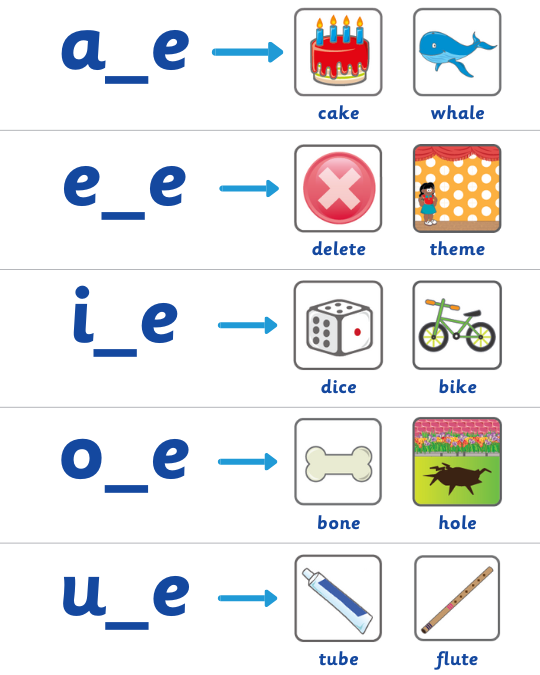
N.B. The splitting off of the ‘e’ occurs very rarely for the long vowel /ee/. Splitting is most common with /ae/. We typically only see the ‘ae’ team in words of Greek or Latin origin such as ‘aerobic’. The letter ‘y’ can represent both a consonant and a vowel sound so it is referred to as a ‘semi-vowel’ letter. Consequently, an additional split vowel digraph is‘y-e’, as in ‘byte’, ‘hype’, ‘style’ and ‘type’.

It would be more accurate to say that the ‘splitter’ in a split digraph is a ‘consonant sound’ rather than a ‘consonant’ because in a few words a consonant digraph splits up the vowel digraph (e.g. in the words ‘clothes’ and ‘ache’).
Over centuries, the pronunciation of some words in English has changed. In Old English many words ended in the letter ‘e’ and the ‘e’ was always pronounced.
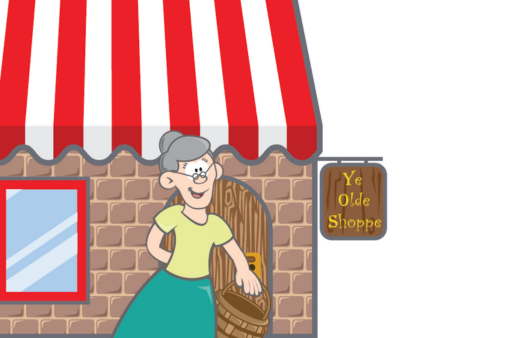 Anyone need anything from Ye Olde Shoppe?
Anyone need anything from Ye Olde Shoppe?
The spelling of some words has also changed. In the 14th century there were sometimes three or four different ways to spell a word. Samuel Johnson tried to standardise spelling and pronunciation of the English language in his ‘Dictionary of the English Language’, published in 1755. He decided that ‘e’ would be used at the end of a word as a cue or signal for a long vowel sound, so, for example:
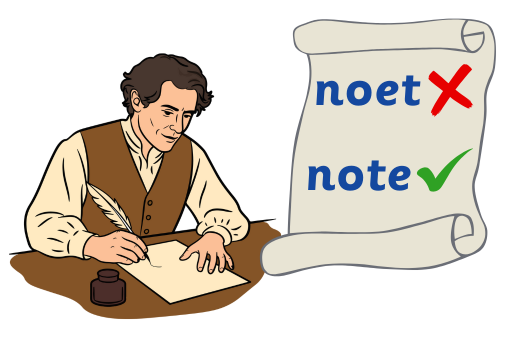
To effectively teach split digraphs, start by showing students a few words containing a vowel digraph that has NOT been split, for example, the ‘oe’ vowel team in words like ‘toe’, doe’ or ‘hoe’. Compare these with words in which the two vowels have been split up, for example, ‘tone’, ‘dome’ or ‘hope’. Emphasise that the two letters, despite being separated, still work together to represent a single vowel sound.
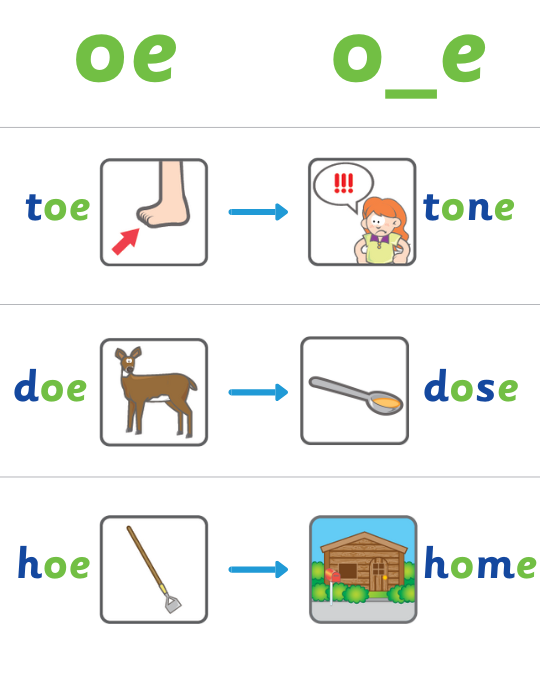
Provide students with multiple examples of words that contain split digraphs and ask the students to identify the two vowels that are working together. Then ask the students to identify the consonant that is doing the splitting. The order in which you do this is important as the long vowel sound will be pronounced before the consonant sound. You can see, in the example below, how I ask students to colour the vowel team one colour and the consonant splitter a different colour. I then ask students to draw a curved link mark between the two vowels and talk about the split vowel team as, for example, ‘a link e’. The link indicates that the vowels are still working together. It looks a bit like a smile so underlines the idea of the vowels happily working together despite being moved apart.
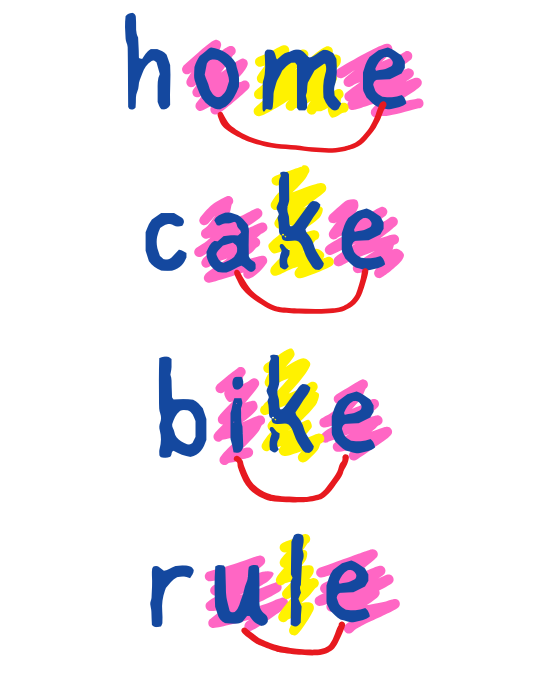
When talking about split digraphs, please be careful of the language you use. Do not use the terms “silent e”, “bossy e”, “magic e” or “fairy e” as they do not help a student to understand the logic of our code. All letters are silent! They are written representations of sounds. The letter ‘e’ is no more ‘bossy’ than any of the other vowels that come second in a pair. e.g. the ’i’ in ‘oi’. Use of the word ‘’magic” suggests to students that the use of the letter ‘e’ in a split digraph is beyond human understanding. If students can understand the term ‘digraph’, they can easily understand the terminology of ‘split digraph’. There is no magic involved in reading and writing words containing a split digraph!

Split digraphs should be taught after students have developed a solid understanding of single letter-sound correspondences, the concept of digraphs and the difference between short and long vowel sounds. Typically, this occurs some time in Year 1. In England’s Letters and Sounds program, on which many synthetic programs have been based, split digraphs were introduced in Phase 5. In Phonics Hero orders, the split digraphs are introduced in:
One of the key principles of synthetic phonics instruction is that students are taught the most common representations of sounds before the less common. The digraphs ‘a-e’, ‘i-e’ and ‘o-e’ occur in many commonly used Tier 1 basic words. The spellings ‘e-e’, ‘u-e’ and ‘y-e’ occur in fewer Tier 1 words. They are often found in Tier 2 academic words (e.g. concede, dispute, analyse) so these spellings should be taught after the common spellings. You will see variations of the order in different programs, for example in the 3 versions of Phonics Hero. The most important teaching principle is that the spellings are taught systematically and logically.
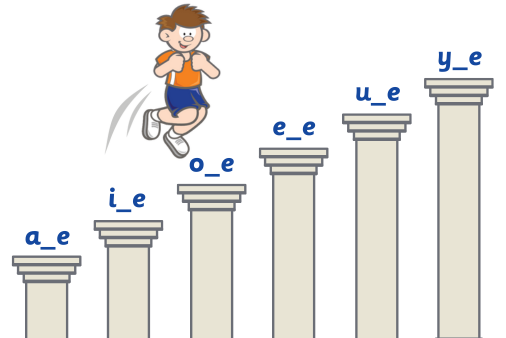
Be careful not to overgeneralise and assume that every vowel–consonant–e word has a long vowel sound. Words such as ‘have’ or ‘were’ remind us that English has exceptions. How can we explain these? One helpful angle is the influence of Samuel Johnson and his ‘Dictionary of the English Language’. Johnson sometimes retained a final ‘e’ to signal pronunciation (as in ‘ce’, ‘se’, ‘ge’ or ‘the’) or to reflect French-origin spellings (e.g. endings in ‘le’, ‘ne’ and ‘ve’). Exploring the many jobs of the letter ‘e’ can help students read and spell split digraph words with greater accuracy.
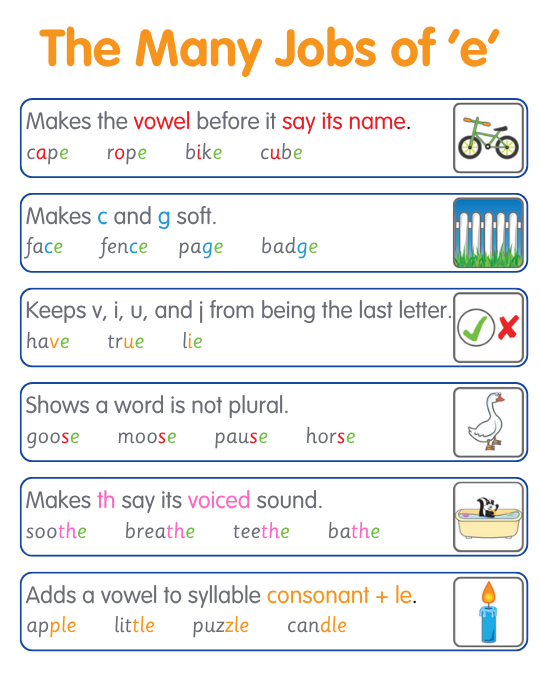 The Many Jobs of e – how ‘e’ changes vowel sounds and word endings.
The Many Jobs of e – how ‘e’ changes vowel sounds and word endings.
There are other times when ‘e’ does two jobs and students should be made aware of this when learning about split digraphs. It makes a final ‘c’ or ‘g’ soft so students need to be aware of the change in consonant sound as well as the change in vowel sound in minimal pairs such as ‘wag’ and ‘wage’.
Sometimes ‘e’ is at the end of a word because it adds length to a word otherwise containing only one or two sounds, making it look more important, for example, ‘were’ or ‘gone’. These two words both have a short vowel sound, not a long one.
If you’d like to know more about the history behind use of ‘e’ at the end of words, I suggest that you read about The Great Vowel Shift, a major change in the pronunciation of English vowels that occurred roughly between 1400 and 1700.
There are many activities that can promote automaticity in reading and spelling of split digraph words.
Use these minimal pairs to help children see and hear how adding e changes a short vowel to a long vowel sound:
| Short Vowel Word | Split Digraph Word |
| hop | hope |
| rid | ride |
| mad | made |
| pin | pine |
| tap | tape |
| cub | cube |
| kit | kite |
| fat | fate |
| pet | Pete |
| not | note |
Tip: Encourage students to read both words aloud and notice the vowel sound change when the final e is added.
Have students act out the splitting process with two students each holding a vowel card and a student with a consonant card stepping in between them. Alternatively, you could have a student ‘steal’ the ‘e’ from a split digraph word and have students pronounce the word left.

Use manipulatives like magnetic letters or letter tiles that can be physically moved apart, preferably letters that are one colour for vowels, another for consonants. Have students build a CVC word (for example “mat”). Then, have them add an “e” to the end to create the CVCE word (“mate”). They should read both words aloud to notice the change in vowel sound.
Use Word Sorts – students should sort into one pile words with a split digraph and into another, words without e.g. cute/cut. To combine reading and spelling, have them write the words from their piles in two columns – you might like to download our Word Sort template.
Use our split digraph worksheets which include cutting and recreating split digraph letters and also independently spelling these words.
Play Bingo with a whole class or group of students, calling out split digraph and CVC or CCVC words. Have students play games like Concentration or Snap with minimal pairs. Go Fish or Happy Families can be played using a set of cards containing split digraph words. A family would be a set of 4 words with the same rime e.g. make, fake, take, wake.
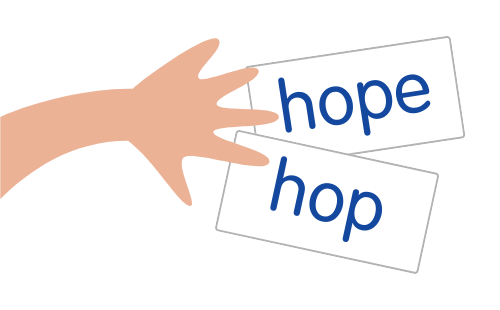
Create silly sentences or stories using minimal pairs or have students create them.

Type short vowel words on the left of a strip of paper (with the vowel in a different colour to the consonants). Write an ‘e’ in red on a small square of paper. Ask students to read the words with and without the ‘e’. Discuss how the meaning changes.

Give students Phoneme Spotter stories containing split digraphs (you can find plenty online). Have them highlight the words containing the split digraphs in the text. When reading the words, students should sound the vowels out as a single unit before saying the consonant. Initially, encourage students to use their finger to connect the two parts of the split digraph when reading a split digraph word.
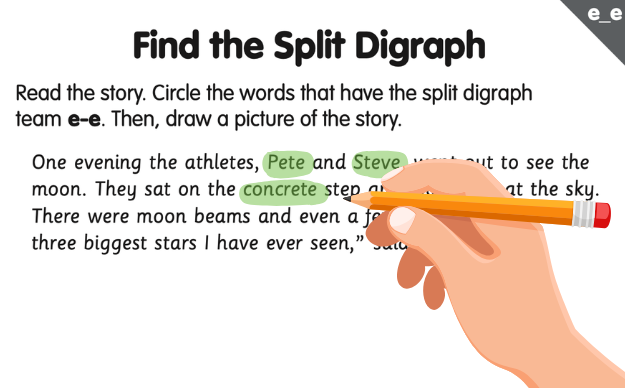
Provide readers that have a split digraph focus e.g. Phonic Books’ Dandelion Readers: Split Vowel Spellings books, Little Learners Love Literacy Stage 7 Unit 4 books, or the Spelfabet Extended Code Set 2 books. Phonics Hero supports both teachers and students in the development of understanding of split digraphs. In the Phonics Hero games, students match the long vowel sound with its split digraph representation (Step 1), read words with a split digraph (Step 2), spell words with a split digraph (Step 3) and read sentences containing split digraph words (Step 6).
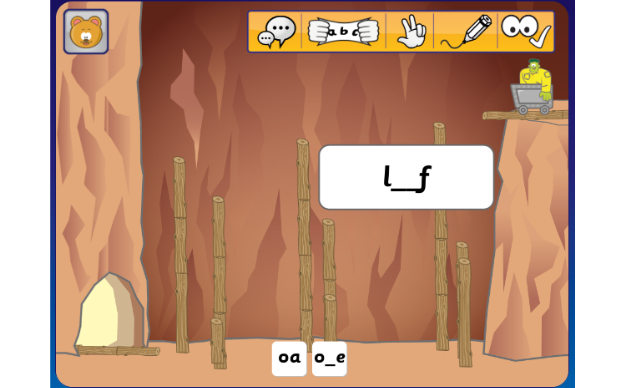 A spelling game; choose the right spelling choice to build Frankenstein’s rollercoaster!
A spelling game; choose the right spelling choice to build Frankenstein’s rollercoaster!
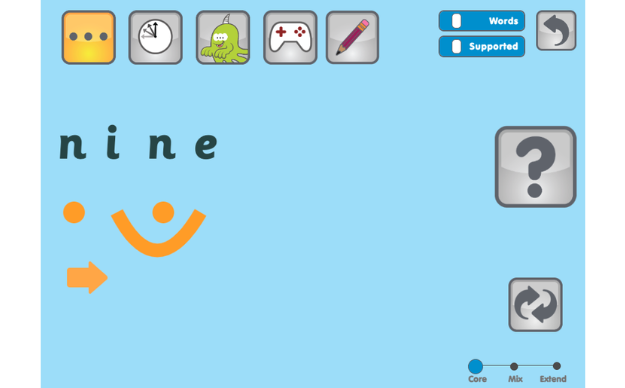 The Phonics Lessons: Sound buttons and picture support for the split digraphs.
The Phonics Lessons: Sound buttons and picture support for the split digraphs.
By explaining the logic of English spelling, using a multi-sensory approach with engaging activities, and providing consistent feedback, you can effectively teach split digraphs and help students develop strong reading and writing skills. No magic needed!